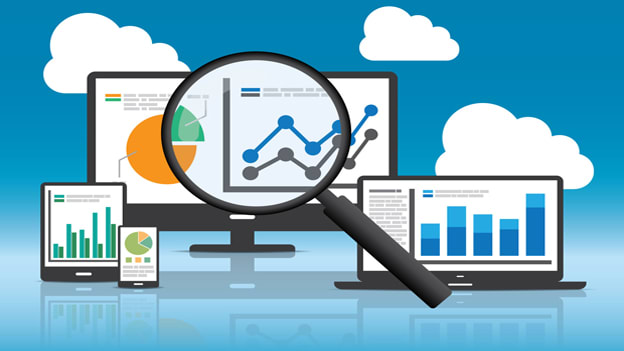The game of success analytics!

Who could predict that the tortoise would win against the nimble rabbit? Most would put the money on the rabbit winning it. And people would assume that you need speed to win the race. On the contrary, it was persistence and perseverance that led to success in that race. Slow and steady won the race there!
In an organizational setting, Talent Analytics can predict if the Rabbit and the Tortoise could win.
And it could also come up with a pattern of the attributes of a winner too! With combination of Psychometric Data, Performance & Business Data, Analytics can help organizations pick winners!
And this is no longer just a science project or a concept. Organizations are using it fast from predicting Star Sales Execs and Sales Managers to front-line managers and future leaders. The way it works is not as complex as it used to be.
Many companies have started investing in Success Analytics — profiling performers and non-performers in each role and figuring out which competencies differentiate them so that hiring and promotion can be done basis that.
The data capture for Success Analytics actually happens via a variety of tools like — psychometric, cognitive, in-baskets, business simulations and a range of others depending on the complexity of the role. And, it doesn’t stop there. The data collected is then plotted along with the MIS data and other people data — demographics, last employer, educational background etc. That gives the company a success profile — to hire, promote and develop. This makes Talent Analytics even more strategic and helps with business impact.
Let’s take some real-life examples. A large Pharma company wanted to make their medical representative hiring more scientific and data-driven using Analytics. The hiring was fairly subjective and they were left wondering if interview process had any impact on the performance of the rep whatsoever. We started by profiling their top performers using a psychometric tool and overlaid their territory sales numbers and internal ratings on that. We could clearly see traits like Customer Service Orientation, Networking and Convincing skills differentiated the top performers from bottom. The company, now, could increase the probability of the success of their hires and people who had high scores on the assessments had 35 percent higher probability of hitting their targets than the other audience. One could overlay the educational qualification (B.Pharm/M.Pharm or B.Sc/M.Sc) and other regional data to make the model more robust and predictive.
Another example is from a Life Insurance company who wanted to introduce predictive analytics on their competency assessments for managerial hiring. The goal was to increase productivity and improve retention. The company had a competency framework that was built on stakeholder conversation. The first step was to understand which of those competencies would correlate to success and accordingly focus on those during the assessment and interview process. Once the success profile of the managers was done, the tool was rolled out. The company managed to increase retention by 10 percent. In the validity studies conducted post hiring, 75 percent of the hiring managers rated that the reports predicted on-job performance. Traits like adaptability, foresight and persistence could find higher correlation to business outcome. Their overall sales numbers from newcomers vis-a-vis last year went up by 16 percent. Of course, there could be some other parameters contributing to the growth as well, but clearly, right people through predictive analysis were one of the major reasons for this impact. Now this is the real business impact of predictive analytics.
We can also analyze the example of a large BPO that wanted to promote and develop their front-line managers using success analytics. We ran a profiling exercise and found out that managers who scored high on traits like Convincing, Mentoring, Risk Taking and Dependability could significantly predict higher performance (> 90 percent confidence level on a regression analysis). The company is now increasing the weightage on these traits during the promotion assessment center as well as for the development interventions planned by L&D.
There are many such cases on how talent analytics especially the success analytics can have clear business impact. And it’s not that complex. One can easily start their own journey into Success Analytics. A few myths and challenges in talent analytics process to watch out for are:
Myth: Analytics is a new age phenomenon!
No! It’s not. You must have done some analysis on your people in the past. But now, the complexity has increased in the form of the number of people and the parameters that you can track. The computing power has also gone up allowing you to crunch data in an effective fashion.
Myth: It is only about Technology
Well, it’s not. It is actually more about logic and less about technology. You have to first start with your business objectives, figure out what data you need, enlist the parameters you can track, align all your primary and secondary data in one place and figure out which parameters correlate more to the business outcomes. Technology is just a means to make this logic faster, efficient and easy. Frankly, one can start their success analytics journey on an excel sheet as well!
Myth: Analytics = Business Intelligence
Just taking the existing data and trying to infer trends about your people is not the full definition of Talent Analytics.
Human beings are complex. Only HRMS or Resume data is not enough to derive meaningful insights. You need to use tools to capture the emotive side of your people to draw meaningful insights.
Myth: Are you fitting a square peg in a round hole?
Comparing a whale, a pigeon and a rabbit on their ability to swim is never a fair comparison. Similarly, the behavioral expectations of Sales, Finance or any operational role are different from each other. Are you depending on the same Psychometric Assessment to capture behavioral data for different job roles in your company? It is actually a force-fit. Customize your assessment and even the reports to measure what really matters to your company. If the data captured itself is not relevant, your analytics will be meaningless. Garbage in is Garbage out!
Myth: Are you living in the silo of your own hypothesis?
Pleasure is in the discovery. Discover results; don’t just flirt with the tools to find what you would like to find. Don’t go with a fixed mindset to prove your hypothesis! Go through the whole process of analytics – from identifying what to measure, scientifically measuring it, analyzing – and then narrowing on the insights. Don’t celebrate too early and conclude!
HR in India is at the cusp of leap-frogging this journey of Analytics. It’s been talked for a while as an emerging technology, finally it has emerged. May the force be with you!









